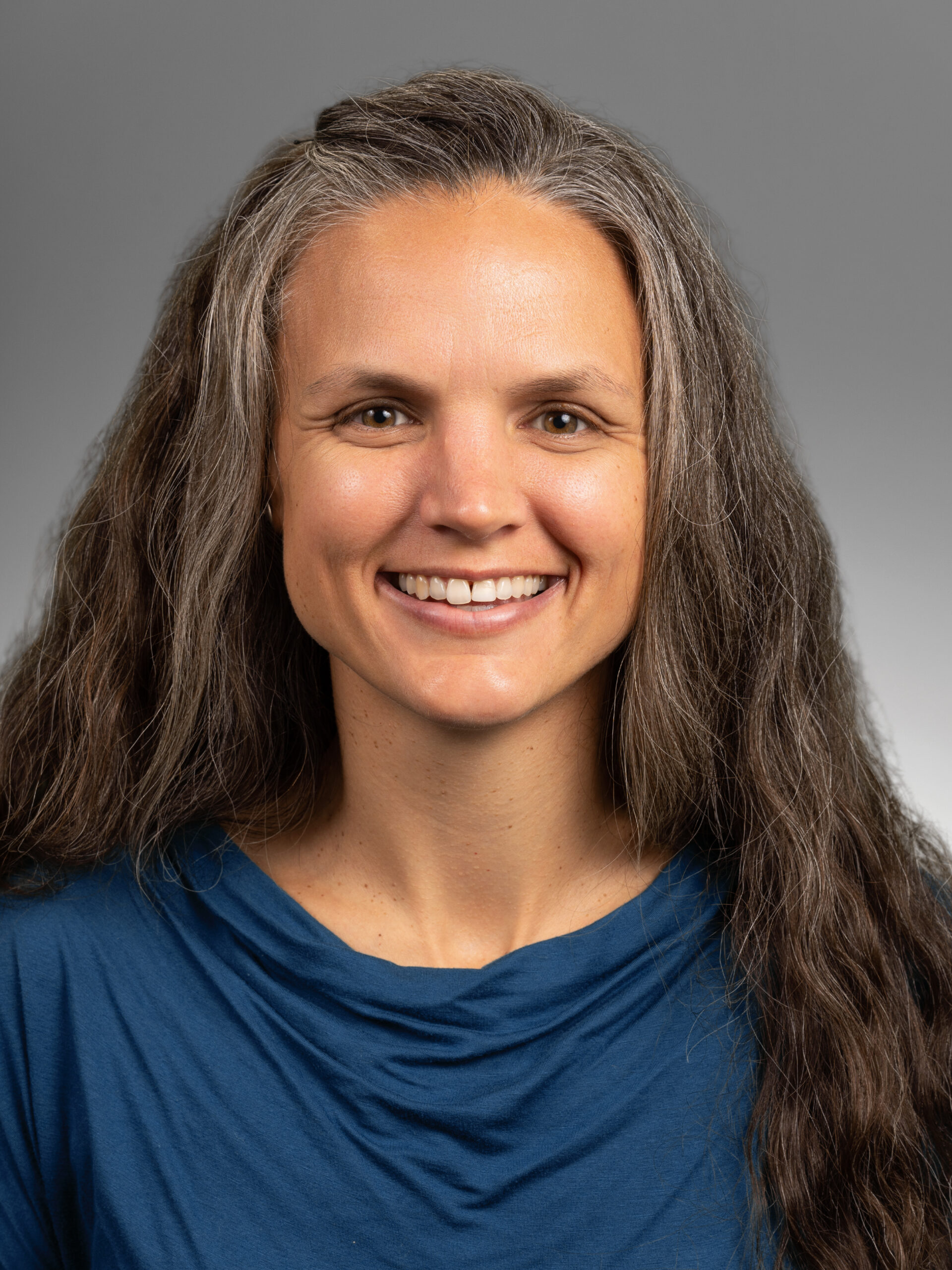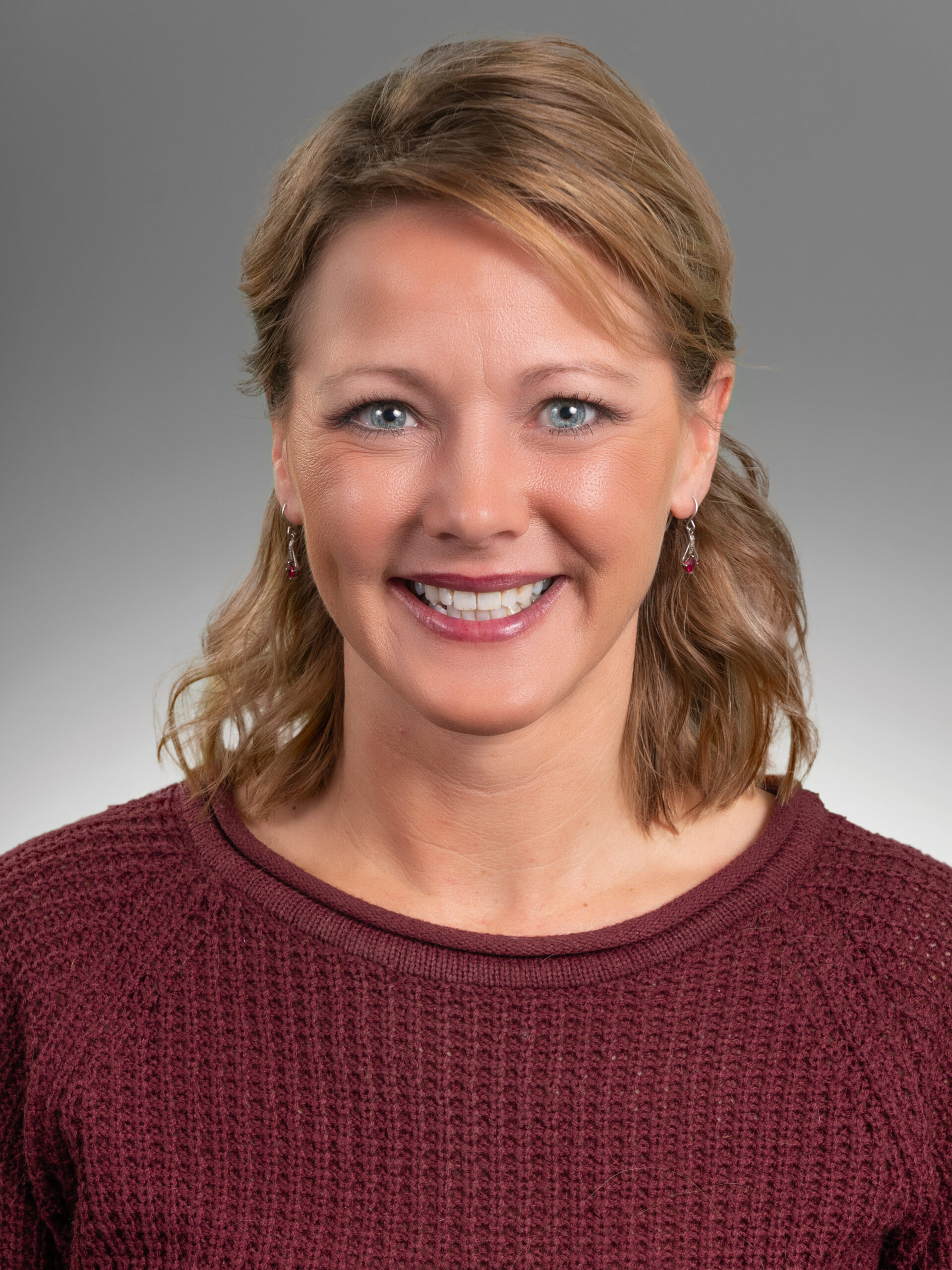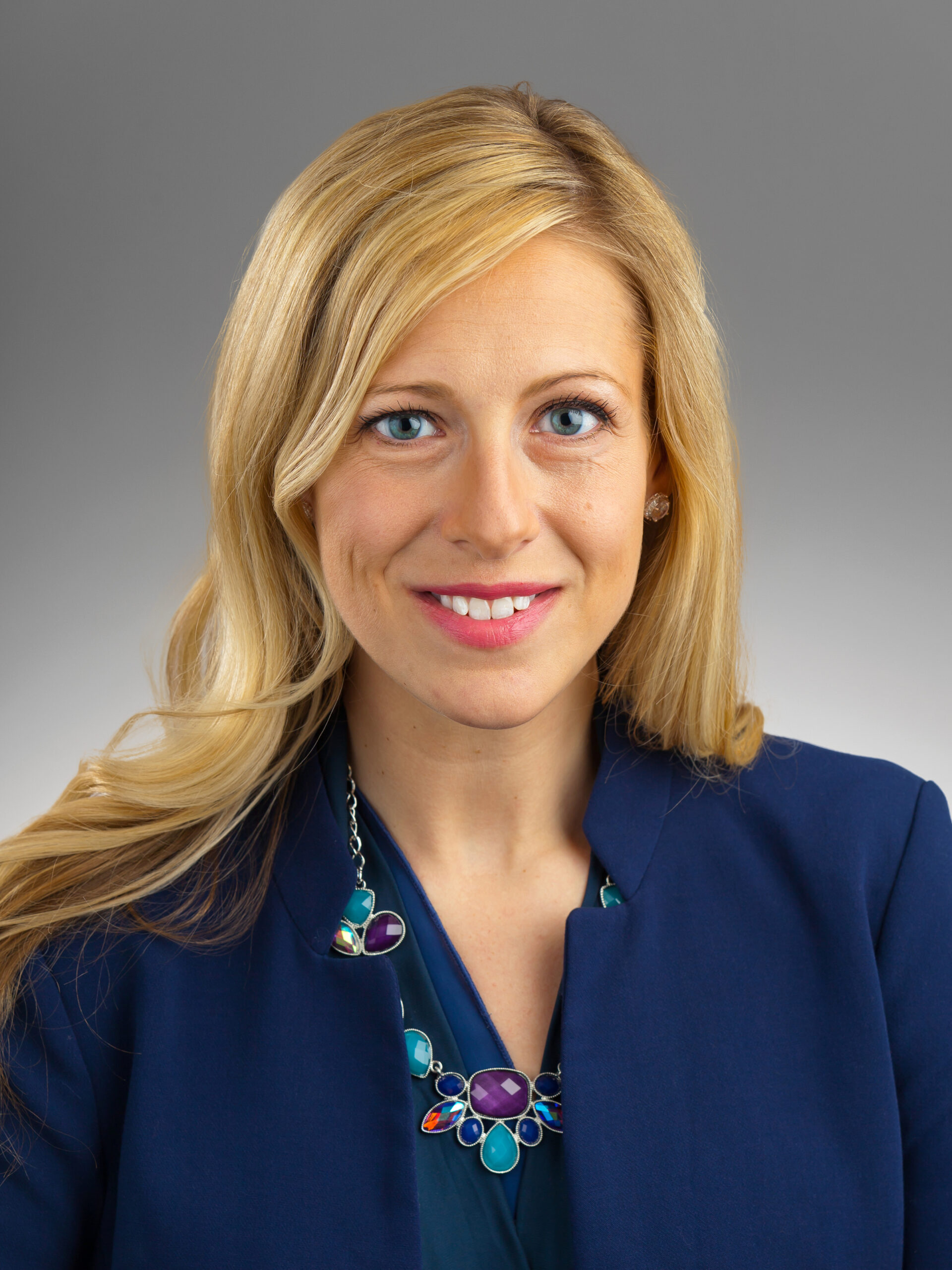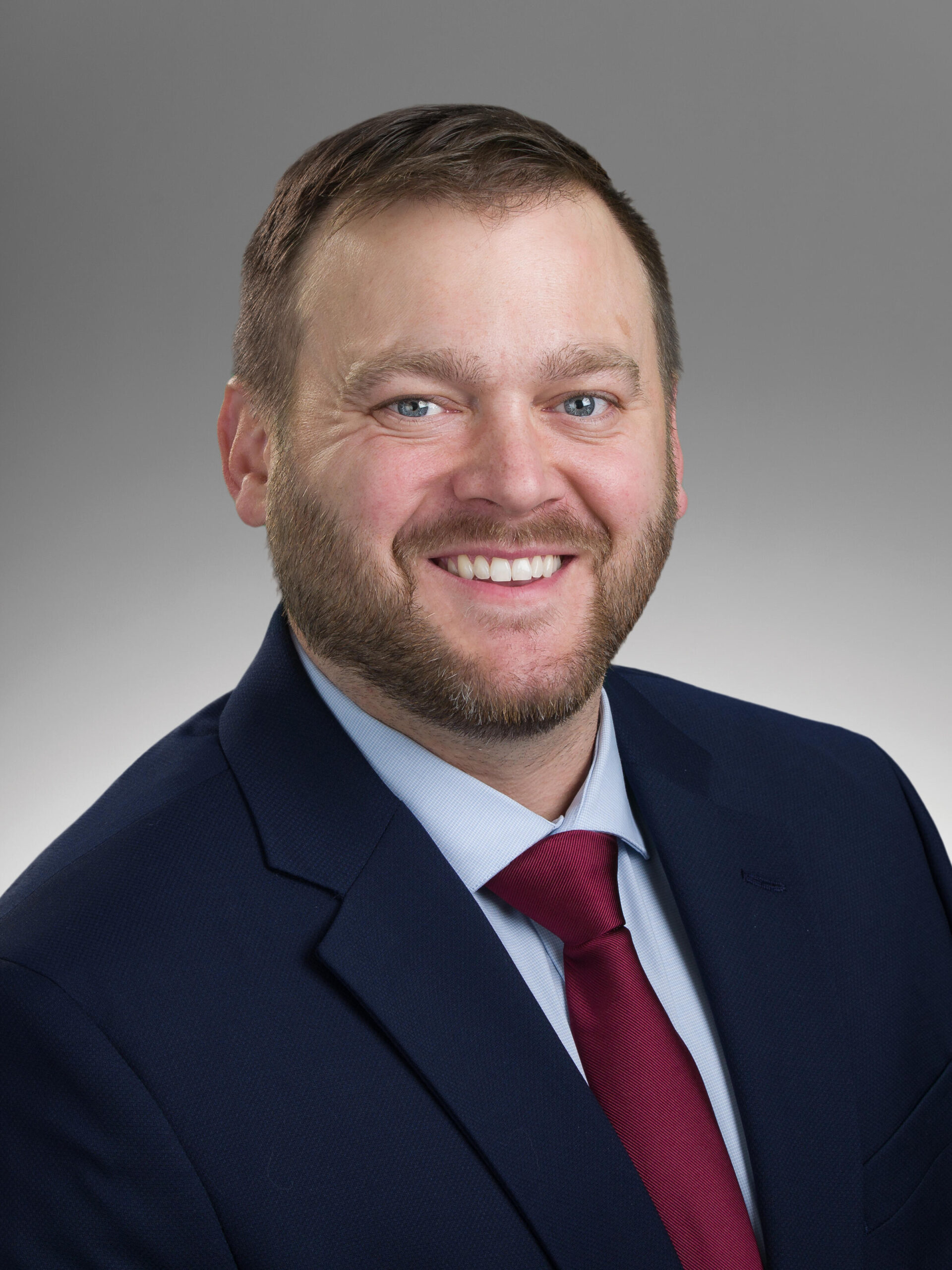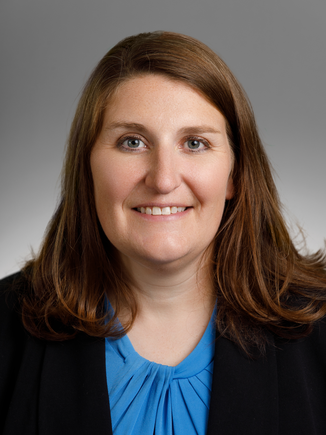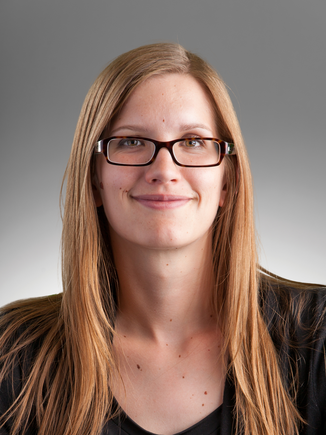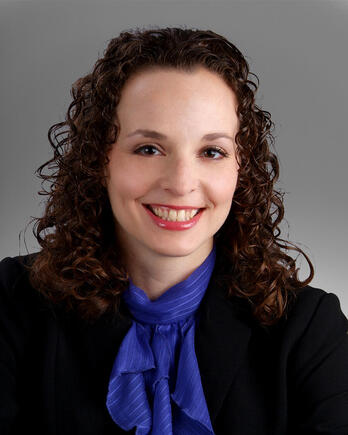Your perimenopause questions, answered
Dr. Breanne Mueller:
Number one, find someone that you trust and that cares about you. And if you don’t feel like you have a connection or someone who’s motivated to help you, change. There’s a hundred doctors out there. Find someone that you jive with and who’s treating you appropriately. If someone is saying, you know, it’s just menopause, we’ll see you later. That’s not appropriate anymore in 2024. I think there’s more investigation to be done. And so definitely don’t get dismissed and stand up for yourself and know that there are plenty of healthy, well researched, safe, affordable options to treat problems that arise.
Courtney Collen (host):
Hello and welcome to “Her Kind of Healthy,” a podcast series brought to you by Sanford Health. I’m your host, Courtney Collen with Sanford Health News. We are starting new conversations about age-old topics from pregnancy to postpartum, managing stress, healthy living, and more. “Her Kind of Healthy” is here to bring you the honest conversations about self-care, happiness, and your overall well-being with our Sanford Health experts.
In this episode, we are talking about perimenopause. I have Dr. Breanne Mueller joining me for this conversation. She specializes in obstetrics and gynecology at the Sanford Aberdeen Clinic in Aberdeen, South Dakota. She is a National American Menopause Society certified practitioner, one of the only practicing providers in this space in the state of South Dakota. So I’m so happy to have her here with me. Dr. Mueller, thank you so much for your time and welcome.
Dr. Breanne Mueller (guest):
Thank you so much for having me. I really enjoy being able to talk about this topic.
Courtney Collen:
Yeah, we’re so excited to have you for this. It wasn’t until recently, I’ll be honest, that I learned menopause can be grouped into three phases or stages. They are perimenopause, menopause, and postmenopause. And while we’re focusing specifically on perimenopause during this conversation, Dr. Mueller, I’d love to have you start with an overview of menopause in general to help us level-set.
Dr. Breanne Mueller:
Totally. So I think menopause is, I mean, first of all, to understand menopause, I think you can compare it to adolescents and puberty. So most people understand what puberty is and what puberty isn’t, because we get classes on it in high school, or not high school, elementary school. They start at elementary school letting you know your body is going to change. This is normal; this is abnormal. And most parents and most people are like, oh, my kid is a little grumpy, or my kid is getting acne or something like that. And they have like a halfway decent expectation of what’s going to happen. So they aren’t spooked. Most people make it through.
Some people need help going through puberty, like they have some problems, but most people make it through and they’re fine. And I think that menopause is puberty in reverse. So the only difference is that we don’t get classes on it. Nobody’s educated on it. And so it can be really scary. It can be really unsettling for people because it’s as life-changing as puberty. But we just have no really societal standard for educating women on “this is normal” and “this is abnormal.” So it can be really upsetting.
Courtney Collen:
That is so fascinating. Puberty in reverse.
Dr. Breanne Mueller:
So the term perimenopause just means around menopause. So what the clinical definition of perimenopause is: it begins with the onset of cycle problems or differences. So if your menstrual cycle is irregular, plus or minus like seven days from your normal and other menopause related symptoms, so like we can go over the symptoms later.
But basically any change from your normal, it starts at that and an extends past through the menopause transition more than a year. So what is the clinical definition of menopause? It is 12 months without a period. It’s, like that simple, but also there’s a lot more to it than that because you know, you can have symptoms before, you can have symptoms after. But perimenopause encompasses the beginning stages, the actual transition, and one year after that menopause, one year without a period. I know. Clinical, huh? So kind of dry.
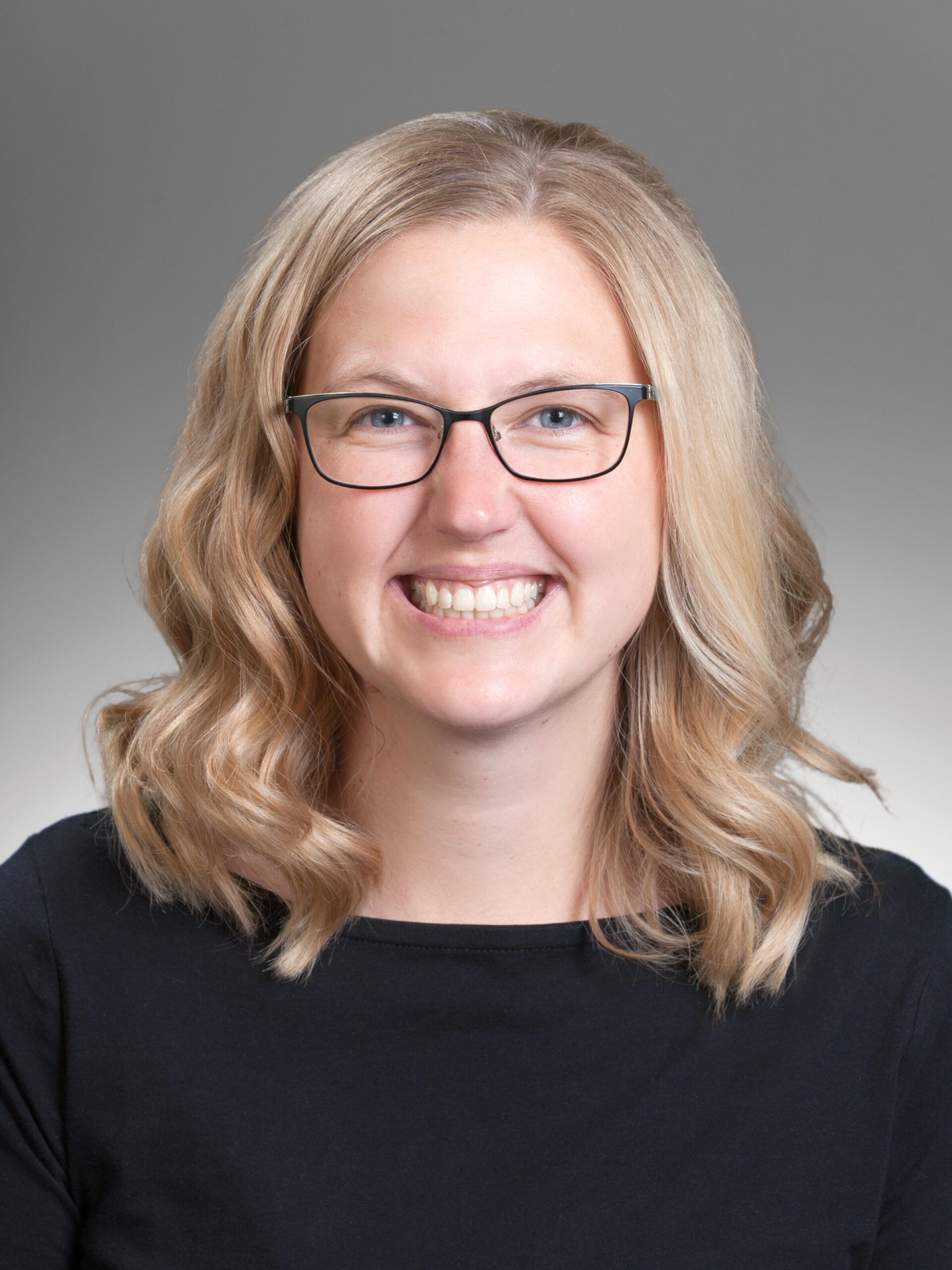
Photo by Sanford Health
Courtney Collen:
As far as symptoms, and you said simply put that it’s 12 months without a period. Are there other symptoms or things that we can be looking for that are associated with perimenopause?
Dr. Breanne Mueller:
Totally, and I think it’s nice to distill it down to like what it is. What it is: 12 months without a period. I mean, so it’s not this nebulous thing. It’s this. I mean, I think to just have nail it down and say this is what it is. However, that’s a retrospective diagnosis, right? I can’t tell you are through menopause yet if you haven’t had a period for nine months. Right? Technically, but it’s a little bit irrelevant.
What’s relevant is people’s symptoms. And I think that’s really important. Also, we can talk about hormone testing later, but what’s most relevant about perimenopause is how you are feeling and what your symptoms are. And I think that when people realize that, I think it’s really hard in our society today to not think about it like a thyroid test or hemoglobin A1C, right? My thyroid is two, when it should be four, that means I need medicine to regulate it.
And it’s important to understand that hormones aren’t like that, especially female hormones. There’s no range that’s perfect for everybody. They’re supposed to fluctuate. And in those fluctuations, are you doing well or are you not doing well? And that’s where someone like me can come in and say, OK, is this what we’re talking about? Is this perimenopause? Is this something I can help with? Or is this something else? So it’s nice to have someone who has the context and kind of knows you to go through it and figure it out.
Courtney Collen:
What is the general age range for when this starts?
Dr. Breanne Mueller:
Totally. So the average age of menopause is 51.6 (laugh), which again, it differs on ethnicity. It differs on health status. It differs on genetics. But if you have all comers in America, it’s 51.6. So and then if people go through a menopause way early, for us that is 40, sometimes 45, that’s called premature ovarian insufficiency. So that’s not menopause. That’s something else completely. And later menopause is also a different animal. But you know, that’s the average age of women, all comers. Of people who go through, like I said, that 12 month months without a period.
Courtney Collen:
What does a woman’s care journey look like? Like at what point do they need to come see you for care? Or are there specific questions they should be asking their providers, say, at a yearly wellness checkup?
Dr. Breanne Mueller:
To be a hundred percent honest, by the time they see me, by the time most women see me for “menopause,” the wheels have completely come off the bus and they’re struggling with life and they’re like, I don’t know what’s happening, but I feel like everything’s wrong. You know, like it’s not something that people usually preemptively come to me for, but sometimes, but not usually.
And honestly, like being a hundred percent transparent, usually by the time they come to me, it’s like, this is happening, and this is happening, and I feel crazy. and what’s going on? And I’m like, whoa, whoa, whoa. We’re going to be OK. We’re going to get through this.
But you know, I think what a different approach could be is, you know, at your yearly visits kind of prep things and be like, Hey, you may find that your period, there’s more time between your periods. You may find that your periods are strange, maybe they’re heavier, maybe they’re lighter and maybe they’re more painful. Maybe they’re not. Here are reasons to call me. If you start having this, this, this, and this, please call me. You don’t have to put up with that.
And I think it’s because of that lack of education on the front end that it’s anxiety provoking. You know, I feel off, I feel like I’m waking up all the time and I’m hot, or I’m not, and I’m trying to Google if this is good or not. And you could just get lost in the weeds a little bit. And I wish we had like a uniform, not a class everyone had to take right? (laughs) But something just to give people some ground to stand on.
Courtney Collen:
Can a woman get pregnant during perimenopause?
Dr. Breanne Mueller:
So it’s possible. And so that is actually a matter of debate. How long do we need to put people on contraception before we can safely say you’re good to go, right? And there’s no agreement on that. And it really boils down to each individual person. How strongly do you feel about not getting pregnant? That’s kind of my question to people.
And if you feel very strongly that you absolutely do not want to get pregnant, then let’s continue contraception kind of above and beyond maybe. There’s no harm in continuing contraception into your mid-50s if you wish. But if you’re like, you know, it’d be fine. I’m OK either way, whatever. Then maybe we start earlier and maybe you go off your reliable contraceptive earlier if that doesn’t matter to you. So, I really think it depends on each individual person and how much of a negative outcome they view that as. That’s kind of clinical, but you know what I’m trying to say.
Courtney Collen:
Yes. Are there medications or therapies that can treat perimenopause symptoms? Let’s talk through some of those either hormonal or non-hormonal options for women.
Dr. Breanne Mueller:
And there is plenty of medication. So if you go through a doctor who knows, who’s trained in this and knows what they’re doing, there’s pills, patches, vaginal rings, tablets, creams – all kinds of things that are through a pharmacy that are FDA-approved that go through your insurance, and they’re pretty affordable.
Honestly, most hormone treatment is extremely affordable. Treatment for menopausal symptoms is based entirely on symptoms. So the National American Menopause Society and ACOG, which is the American College of Obstetrics and Gynecology, they don’t necessarily recommend basing it on hormone blood tests or any other hormone tests. They really recommend doing it based on your symptoms because that’s way more meaningful in a medical way.
So as an aside, but also an interesting aside, the hallmark of menopause is hormonal variability. Meaning it’s not that your hormones are doing like this, like it’s steady downward decline that’s very predictable. It’s very much not like that. It’s actually very erratic. So have you ever run your car out of gas?
Courtney Collen:
Yes.
Dr. Breanne Mueller:
So I have too, and it’s really crappy. But here’s the thing is you know how you turn it over and like, you kind of get a little juice and you’re able to like lurch forward a little bit and then it dies, and then you turn it over again and you’re like, maybe I can get through this intersection. Ah, you know, you try to like give it a little gas and you’re like, oh yeah, I can go a little further (laugh), and then you stop again.
So I think of the ovaries doing that in the end here. So, the brain is telling the ovaries, “Hey, produce estrogen, produce these hormones that are going to make people ovulate, the woman ovulate.” So when the brain is like, “ovaries go, ovaries go, ovaries go,” and the ovaries don’t got anything left, they’re like, your gas tank that’s out of gas, they can kind of do some last minute spurts. Like, OK, let’s try our best. And you get like a little lurch out of it and sometimes you don’t. But the hallmark is just this crazy inconsistency in it, right?
And so you could have a normal cycle and then you could have three cycles that are not normal. You could have actually a very high cycle where you actually have more hormones than a teenage girl in your 50s, but then the next cycle is like dead, like nothing. So that is the hallmark of menopause. So that’s why hormone testing isn’t especially helpful because it could be anything. It doesn’t mean that you don’t deserve treatment or don’t need treatment or aren’t in perimenopause. So just as a caveat of that.
Another way to say that is like, OK, the other way I think about menopause or women’s cycles – do you play music or piano or anything like that?
Courtney Collen:
Yeah. Piano growing up, violin. Yeah.
Dr. Breanne Mueller:
So think of a song. So like each person, like think of like “Für Elise,” like, don’t judge me on my singing, but everybody can recognize that tune. And they kind of understand what it is. So when I meet a woman, I’m like, OK, this is her tune. May be in a different key. It may be in a different tempo, but it’s a tune and it’s recognizable, right? So when we’re doing hormone testing and come, like, think about trying to evaluate “Für Elise,” that classical music song by just saying, OK, the notes are on the piano. Well, yeah, they are (laugh), but that doesn’t mean that the song is playing correctly, right? And so what I do, how I think of hormone testing is like if I test you today and we get like an F sharp, maybe it’s an F sharp that belongs in the song, maybe it’s not, but it’s not really relevant.
What we need to evaluate is the whole song. Is it playing correctly for you? Does it sound good? Is it working? Yeah. Then that’s what matters. It doesn’t matter that on this Tuesday in December, your hormone level was this. What matters is your body, how it’s functioning, what the cycle of it is, and what that means for you.
So anyway, maybe that’s off topic or whatever, but anyway, when we’re looking for hormone treatment, what I’m looking for is what’s going to make sense for you? What are your symptoms, what are your goals? And oftentimes I just ask people, what is your goal here? And honestly, it’s been the best question I’ve ever asked people because my goal is not always congruent with their goals. And then we just cut to the chase and say, OK, my goal is actually my mood. Cool, let’s tackle it. And then after that we can tackle a different thing.
But as far as hormones, treatments, so basically when you’re thinking about menopause, every cell in the human body, and again, I’m talking about women now, I only deal with women, I don’t deal with men sorry, (laugh), but every cell almost in a woman’s body has an estrogen receptor on it. So that means that in menopause, potentially any system can have changes to it. Yeah. So people can have hot flashes, night sweats, you know, and that is actually a function of you withdrawing, same as you would withdraw from a drug, you are withdrawing from estrogen. And that’s what that feels like which I think is kind of interesting. So how do we fix that problem? It is very acceptable and very, very safe and effective for many, many women to be put on a dose of estrogen. And it literally fixes that problem.
Courtney Collen:
So fascinating that any part of the body could feel the effects or show the effects, present symptoms during this phase. OK. I’m learning so much.
You mentioned mood a couple minutes ago. What are some mood changes or mental health concerns that we could be on alert for during perimenopause? And if a patient is struggling during that time, what are some of the signs and where or how or when should they seek help?
Dr. Breanne Mueller:
Being an obstetrician/gynecologist, basically I specialize in assisting women through major phases of their life. Like that’s kind of how I see myself. I’m walking alongside, but also easing the transitions of life. Transitions of adolescence, transitions of pregnancy, of motherhood, of contraception and then the menopause, right? And any transition in life, you have a risk of having mental health changes, right?
So pregnancy people, some people struggle. It’s just a huge change. Your whole identity is changing. And I think menopause is the same. And it’s complicated by the fact that there is very little education. So it’s anxiety provoking for a lot of people, not everybody, but you feel different than you have for 40 years, right? And so I think that there’s been debate, there’s been randomized control trials, there’s been a lot of research on is menopause itself a risk factor or a cause of anxiety, depression and other mental health disorders? And there’s mixed data on that, quite honestly. And is it truly menopause or is it the transition or whatever?
I don’t know that anyone has a solid, solid answer on that. But I will tell you: anyone who’s had an episode of depression earlier in their life is at increased risk of having a recurrence of that major depression in menopause. I can say that for sure. So what that means is, so this is actually one of the things that I screen for all the time. I see a ton of people sometimes who come in and they’re like, I think my hormones are off. That’s always the complaint, right? I think my hormones are off. And I always love delving into that more because I just saw someone the other day. Love her to death. I think she’s outstanding.
And she goes, my hormones are off, my hormones are off. And then we ended up talking more and she lists off literally the clinical criteria for major depression. I have loss of interest in the things that I usually had interest in. I can’t get out of bed. I want to go to sleep and not wake up. And I’m like, oh, for Pete’s sake, we can fix this. But it is a depression issue more than it is a menopause potentially issue. You know what I mean? And so I think it’s a super important to get someone who is able to have, first of all, get to know you as a person. Because you matter as a person. “Für Elise” isn’t two notes. It’s a whole, you know, melody, and you’re a melody too. You’re not a one-note wonder. And I want to know all of that before I say, you know, piano’s a little out of tune, lady.
Courtney Collen:
- Love the music analogy.
Dr. Breanne Mueller:
So I think if I had like a really bottom line message for people as far as menopause and medicine, I would say number one, find someone that you trust and that cares about you. And if you don’t feel like you have a connection or someone who’s motivated to help you change, there’s a hundred doctors out there. Find someone that you jive with and who’s treating you appropriately. If someone is saying, you know, it’s just menopause, we’ll see you later. That’s not appropriate anymore in 2024.
I think there’s more investigation to be done. And so definitely don’t get dismissed and stand up for yourself and know that there are plenty of healthy, well-researched, safe, affordable options to treat problems that arise.
But the other underlining message I have is be careful who you trust. So in this environment, it’s a money maker, right? You have people who are suffering and it’s oftentimes hard to discern who’s selling you something versus who’s treating a medical condition. And so I follow this lady on TikTok, Molly McPherson, and she’s a PR fixer, and she said, I always know who’s telling the truth because I follow the money. So if she’s talking about a PR nightmare or who’s in trouble and who’s not, she goes, I always know the truth because I follow the money. And I tell patients that all the time. If I say, you know, I could prescribe you this cheap testosterone or cheap estrogen, but if you buy my potion, lotion, pellet, whatever you just be aware of that, you know, if there’s money involved that is going directly to the person, I always just kind of like, I don’t know, maybe you view that as you would.
Courtney Collen:
That is such good advice, especially for this is a new transition of life. Like you said, you care for the women as they go through different transitions, and it can be scary and overwhelming and mentally taxing. And so that’s why we are so grateful for the advice that you just gave us as we go through that care journey, but also being mindful and aware of what we’re getting into and pay attention to our bodies of course, too.
Dr. Breanne Mueller:
I think one phrase that I think needs to be said is, what you’re going to see in this space when you educate yourself, which I always ask people like, how is it that you get information? How do you intake information? Do you go to TikTok? Do you go to Instagram? Do you read a book? Do you listen to a podcast? Do you listen to an audiobook? Do you talk to your friends? Like, how is it that you get information?
And then I try to provide people reliable resources in that space, whatever space that is comfortable for them. And I would say, you know, one term you’re going to see a lot is bioidentical. So there’s all this talk about bioidentical hormone therapy and how it’s safer or better, and you have to understand what that term is. It’s a marketing term.
So basically there was a time period where women weren’t really given hormones and they could kind of get a bad rap maybe a generation ahead of me, right? Where hormone therapy will give you breast cancer and kill you, right? That was the prevailing thinking. And so out of that space, unfortunately women were still suffering, but doctors weren’t prescribing medicine.
And so what you had was a space where people could sell products and not have it go through the FDA and not seem as scary, but accomplish a similar kind of symptom relief. It’s a product that hasn’t been studied, approved, researched, or has reliable dosing. And so because it’s not FDA approved, they don’t have to provide a warning label to it. And to some people, because they don’t have a warning label, they think it’s safer. But understand that there are safe prescription medicines that are better arguably for women.
Courtney Collen:
If a woman comes to you and is just overwhelmed and anxious … and she just needs some reassurance that it is going to be OK, and this is part of life and transitioning as a woman into midlife, what do you tell her?
Dr. Breanne Mueller:
I try to approach people where they’re at, and what is it that you want your life to look like and how can I help get you there? You know, if people want reassurance, again, it goes back to me asking what people’s goals are. And a lot of people’s goals are, tell me I’m normal. Tell me I’m not going to die. Tell me I don’t have cancer. Tell me that I’m not falling apart. Tell me this isn’t going to last forever. And I’m happy to do that. I’m happy to do that.
And I’ll be like, you know, let’s talk about it again in three or six months. Let’s digest a little bit. Let’s get some information and let’s talk again. I’m not abandoning you, I’m not dismissing you, but I’m telling you like, you aren’t going to die. Your life is just beginning. The rest of your life is just beginning, just like when you were 13 or 12 or 11. It’s not better or worse. It’s just different.
And then on the flip side, if she is like, no, really, my quality of life is actually circling the toilet bowl. I need some help. Then that’s totally different too. If they say that I want help medically, then we go that route. But it really boils down to who you are as a person and how I can understand you, but also help you and meet you where you’re at. I’m not pushing anything. I’m not selling anything. I want to help you wherever, whatever that means for you.
Courtney Collen:
And that’s why we’re so grateful for you at Sanford for your expertise and of course for this conversation. Like you are truly an expert in this space and we are so grateful for that and for your insight. Is there anything else that I didn’t ask you that you wanted to add on this topic?
Dr. Breanne Mueller:
I just want to reiterate that there’s so many good providers around the state, and I think the people that I love associating with are not people who are trying to isolate or keep information from anybody, but just supporting everyone in the space and being like women, doctors, providers, physical therapists, sex therapists, actual counselors.
Let’s all be on the same page to help women. Let’s work together to get women the best health care possible, and let’s help educate and get everybody care they need. And that’s the sort of people that I want to be around, and that’s the sort of people I want to be associated with.
And to be clear, I’m not the only perfect person out there for everybody, but I want you to find your perfect person for you. And I want you to understand that you’re not alone, that there are people out there who can help you. And whatever you are feeling or whatever we can help you with, understand that there’s options that are safe and good.
Courtney Collen:
Well, I love to hear it and I could not have said that better myself. Dr. Mueller, thank you so much for your time. Sanford Health, OB/GYN in Aberdeen, South Dakota, and a National American Menopause Society certified practitioner. We so appreciate you and all that you do for women, for patients all across the community. Thanks so much.
Dr. Breanne Mueller:
Thank you so much for having me. I super appreciate it.
Courtney Collen:
I sure hope you learned as much as I did from our conversation today. This was another episode of the “Her Kind of Healthy” podcast series, brought to you by Sanford Health. For Sanford Health News, I’m Courtney Collen. Thanks for being here.
